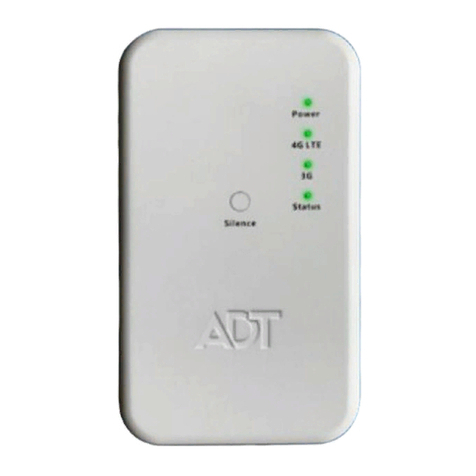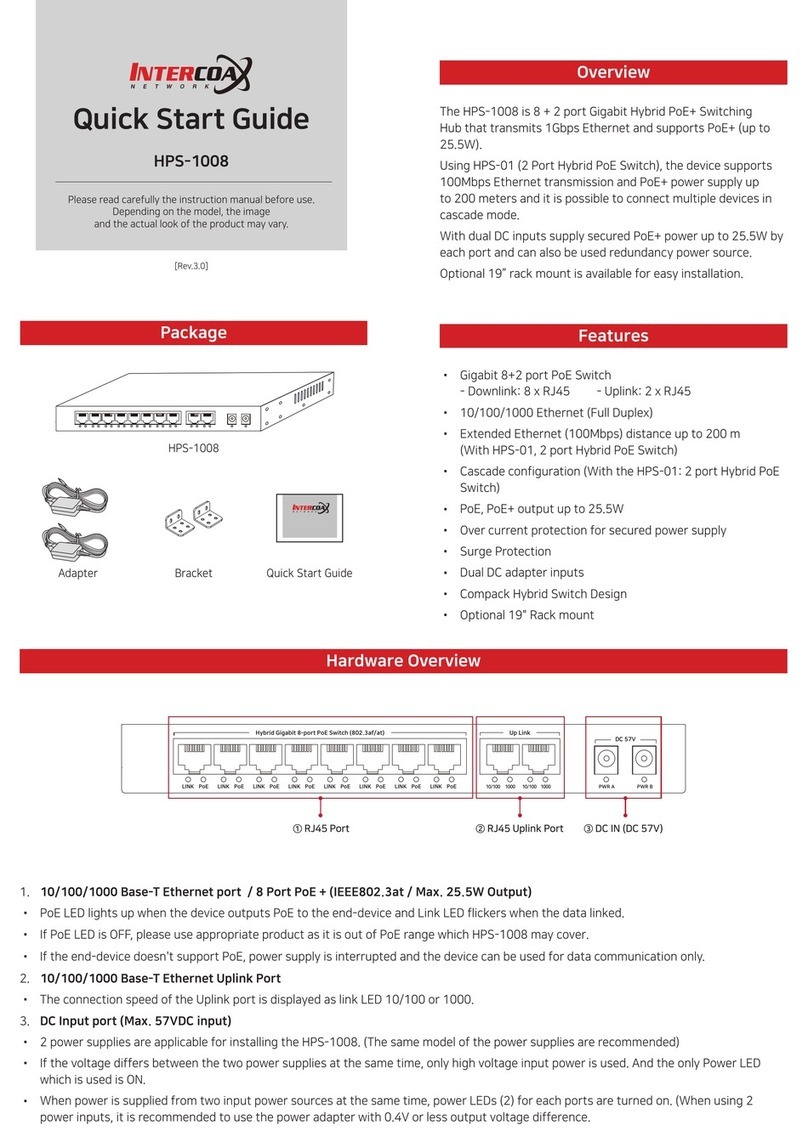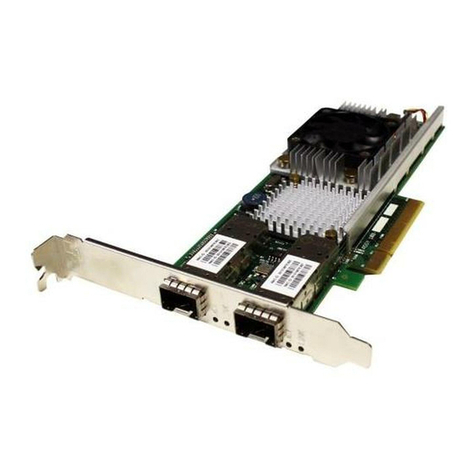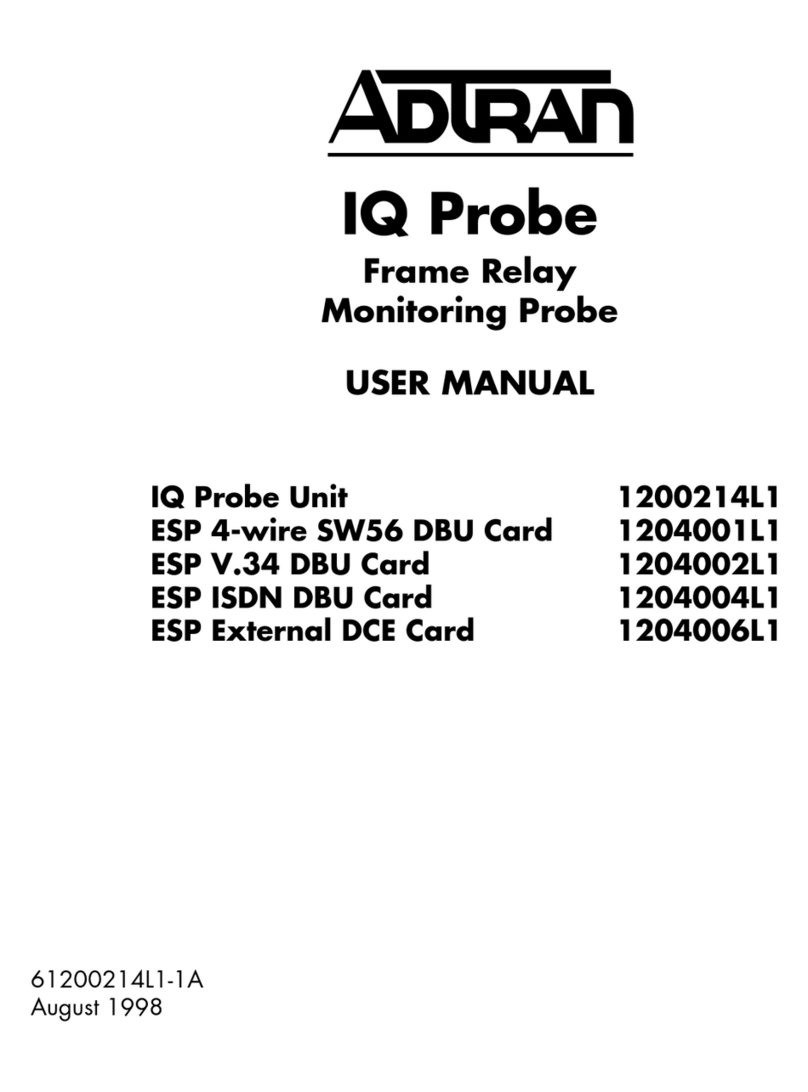SiTime SiT8925B User manual

SiT8925B
High Frequency, Automotive AEC-Q100 Oscillator
Features
AEC-Q100 with extended temperature range (-55°C to 125°C)
Frequencies between 115.2 MHz and 137 MHz accurate to
6 decimal points
100% pin-to-pin drop-in replacement to quartz-based XO
Excellent total frequency stability as low as ±20 ppm
Industry best G-sensitivity of 0.1 PPB/G
Low power consumption of 3.8 mA typical at 1.8V
LVCMOS/LVTTL compatible output
Industry-standard packages: 2.0 x 1.6, 2.5 x 2.0, 3.2 x 2.5,
5.0 x 3.2, 7.0 x 5.0 mm x mm
RoHS and REACH compliant, Pb-free, Halogen-free and
Antimony-free
Applications
Automotive, extreme temperature and other high-rel
electronics
Infotainment systems, collision detection devices, and
in-vehicle networking
Powertrain control
Electrical Characteristics
Table 1. Electrical Characteristics
All Min and Max limits are specified over temperature and rated operating voltage with 15 pF output load unless otherwise
stated. Typical values are at 25°C and nominal supply voltage.
Parameter
Symbol
Min.
Typ.
Max.
Unit
Condition
Frequency Range
Output Frequency Range
f
115.20
–
137
MHz
Refer to Tables 13 to 15 for the exact list of supported frequencies
Frequency Stability andAging
FrequencyStability
F_stab
-20
–
+20
ppm
Inclusiveof Initialtoleranceat 25°C,1st yearaging at25°C,and
variations over operating temperature, rated power supply voltage
and load (15 pF ±10%).
-25
–
+25
ppm
-30
–
+30
ppm
-50
–
+50
ppm
Operating TemperatureRange
Operating Temperature
Range (ambient)
T_use
-40
–
+85
°C
AEC-Q100 Grade3
-40
–
+105
°C
AEC-Q100 Grade2
-40
–
+125
°C
AEC-Q100 Grade1
-55
–
+125
°C
Extendedcold,AEC-Q100 Grade1
Supply Voltage and Current Consumption
Supply Voltage
Vdd
1.62
1.8
1.98
V
Allvoltagesbetween2.25Vand3.63V including 2.5V,2.8V,3.0V and 3.3V
are supported. Contact SiTime for 1.5V support
2.25
–
3.63
V
Current Consumption
Idd
–
6
8
mA
No load condition, f = 125 MHz, Vdd = 2.25V to3.63V
–
4.9
6
mA
No load condition, f = 125 MHz, Vdd = 1.62V to1.98V
LVCMOS OutputCharacteristics
Duty Cycle
DC
45
–
55
%
Rise/Fall Time
Tr, Tf
–
1.5
3
ns
Vdd = 2.25V - 3.63V, 20% - 80%
–
1.5
2.5
ns
Vdd = 1.8V, 20% - 80%
Output High Voltage
VOH
90%
–
–
Vdd
IOH = -4 mA (Vdd = 3.0V or3.3V)
IOH = -3 mA (Vdd = 2.8V and Vdd =2.5V)
IOH = -2 mA (Vdd = 1.8V)
Output Low Voltage
VOL
–
–
10%
Vdd
IOL = 4 mA (Vdd = 3.0V or3.3V)
IOL = 3 mA (Vdd = 2.8V and Vdd =2.5V)
IOL = 2 mA (Vdd = 1.8V)
Input Characteristics
Input High Voltage
VIH
70%
–
–
Vdd
Pin 1, OE
Input Low Voltage
VIL
–
–
30%
Vdd
Pin 1, OE
Input Pull-up Impedance
Z_in
–
100
–
k
Pin 1, OE logic high or logiclow
Startup and ResumeTiming
StartupTime
T_start
–
–
5
ms
Measured from the time Vdd reaches its rated minimum value
Enable/Disable Time
T_oe
–
–
130
ns
f = 115.20 MHz. For other frequencies, T_oe = 100 ns + 3 * cycles
Standby Current
I_std
–
2.6
–
A
Vdd = 2.8V to 3.3V,
ST
= Low, Output is weakly pulleddown
–
1.4
–
A
Vdd = 2.5V,
ST
= Low, Output is weakly pulled down
–
0.6
–
A
Vdd = 1.8V,
ST
= Low, Output is weakly pulled down
Rev 1.6
July 18, 2018
www.sitime.com

SiT8925B High Frequency, Automotive AEC-Q100 Oscillator
Rev 1.6
Page 2 of 18
www.sitime.com
Table 1. Electrical Characteristics (continued)
Parameter
Symbol
Min.
Typ.
Max.
Unit
Condition
Jitter
RMS Period Jitter
T_jitt
–
1.6
2.5
ps
f = 125 MHz, 2.25V to3.63V
–
1.8
3
ps
f = 125 MHz, 1.8V
Peak-to-peak PeriodJitter
T_pk
–
12
20
ps
f = 125 MHz, Vdd = 2.5V, 2.8V, 3.0V or 3.3V
–
14
30
ps
f = 125 MHz, Vdd = 1.8V
RMS Phase Jitter (random)
T_phj
–
0.7
–
ps
f = 125 MHz, Integration bandwidth = 900 kHz to 7.5 MHz
–
1.5
–
ps
f = 125 MHz, Integration bandwidth = 12 kHz to 20 MHz
Table 2. Pin Description
Pin
Symbol
Functionality
1
OE/NC
Output Enable
H[1]: specified frequency output
L: output is high impedance. Only output driver is disabled.
No Connect
Any voltage between 0 and Vdd or Open[1]: Specified frequen-
cy output. Pin 1 has no function.
2
GND
Power
Electrical ground[2]
3
OUT
Output
Oscillator output
4
VDD
Power
Power supply voltage[2]
1 4
OE/NC VDD
32
GND OUT
Figure 1. Pin Assignments
Notes:
1. In OE mode, a pull-up resistor of 10kor less is recommended if pin 1 is not externally driven. If pin 1 needs to be left floating, use the NC option.
2. A capacitor of value 0.1 µF or higher between Vdd and GND is required.
Top View

SiT8925B High Frequency, Automotive AEC-Q100 Oscillator
Rev 1.6
Page 3 of 18
www.sitime.com
Table 3. Absolute MaximumLimits
Attempted operation outside the absolute maximum ratings may cause permanent damage to the part. Actual performance
of the IC is only guaranteed within the operational specifications, not at absolute maximum ratings.
Parameter
Min.
Max.
Unit
StorageTemperature
-65
150
°C
Vdd
-0.5
4
V
ElectrostaticDischarge
–
2000
V
Soldering Temperature (follow standard Pbfree soldering guidelines)
–
260
°C
JunctionTemperature[3]
–
150
°C
Note:
3. Exceeding this temperature for extended period of time may damage the device.
Table 4. Thermal Consideration[4]
Package
JA, 4 Layer Board
(°C/W)
JA, 2 Layer Board
(°C/W)
JC, Bottom
(°C/W)
7050
142
273
30
5032
97
199
24
3225
109
212
27
2520
117
222
26
2016
152
252
36
Note:
4. Refer to JESD51 for JA and JC definitions, and reference layout used to determine the JA and JC values in the above table.
Table 5. Maximum Operating JunctionTemperature[5]
Max Operating Temperature(ambient)
Maximum Operating JunctionTemperature
85°C
93°C
105°C
113°C
125°C
133°C
Note:
5. Datasheet specifications are not guaranteed if junction temperature exceeds the maximum operating junction temperature.
Table 6. EnvironmentalCompliance
Parameter
Condition/TestMethod
Mechanical Shock
MIL-STD-883F, Method2002
MechanicalVibration
MIL-STD-883F, Method2007
TemperatureCycle
JESD22, Method A104
Solderability
MIL-STD-883F, Method2003
Moisture SensitivityLevel
MSL1 @ 260°C

SiT8925B High Frequency, Automotive AEC-Q100 Oscillator
Rev 1.6
Page 4 of 18
www.sitime.com
Test Circuit and Waveform
4
1
3
2
0.1µF
Power
Supply
OE/NC Function
Test
Point
15pF
(including probe
and fixture
capacitance)
Vdd Vout
Vdd 1k
Figure 2. Test Circuit[6]
80% Vdd
High Pulse
(TH)
50%
20% Vdd
Period
tftr
Low Pulse
(TL)
Figure 3. Waveform
Note:
6. Duty Cycle is computed as Duty Cycle =TH/Period.
Timing Diagrams
90% Vdd Vdd
Pin 4 Voltage
CLK Output
T_start
T_start: Time to start from power-off
No Glitch
during start up
HZ
Figure 4. Startup Timing (OE Mode)[7]
50% Vdd
Vdd
OE Voltage
CLK Output
T_oe
T_oe: Time to re-enable the clock output
HZ
Figure 5. OE Enable Timing (OE Mode Only)
50% Vdd
Vdd
OE Voltage
CLK Output
T_oe: Time to put the output in High Z mode
HZ
T_oe
Figure 6. OE Disable Timing (OE ModeOnly)
Note:
7. SiT8925 has “no runt” pulses and “no glitch” output during startup or resume.

SiT8925B High Frequency, Automotive AEC-Q100 Oscillator
Rev 1.6
Page 5 of 18
www.sitime.com
Performance Plots[8]
4.5
4.7
4.9
5.1
5.3
5.5
5.7
5.9
6.1
6.3
6.5
115 117 119 121 123 125 127 129 131 133 135 137
1.8 2.5 2.8 3.0 3.3
Idd (mA)
Frequency (MHz)
Figure 7. Idd vs Frequency
-25
-20
-15
-10
-5
0
5
10
15
20
25
-55 -35 -15 5 25 45 65 85 105 125
DUT1 DUT2 DUT3 DUT4 DUT5 DUT6 DUT7
DUT8 DUT9 DUT10 DUT11 DUT12 DUT13 DUT14
DUT15 DUT16 DUT17 DUT18 DUT19 DUT20
Frequency (ppm)
Temperature (°C)
Figure 8. Frequency vsTemperature
0.0
0.5
1.0
1.5
2.0
2.5
3.0
3.5
4.0
115 117 119 121 123 125 127 129 131 133 135 137
1.8 V 2.5 V 2.8 V 3.0 V 3.3 V
RMS period jitter (ps)
Frequency (MHz)
Figure 9. RMS Period Jitter vs Frequency
45
46
47
48
49
50
51
52
53
54
55
115 117 119 121 123 125 127 129 131 133 135 137
1.8 V 2.5 V 2.8 V 3.0 V 3.3 V
Duty cycle (%)
Frequency (MHz)
Figure 10. Duty Cycle vsFrequency
0.0
0.5
1.0
1.5
2.0
2.5
-40 -30 -20 -10 0 10 20 30 40 50 60 70 80 90 100 110 120
1.8 V 2.5 V 2.8 V 3.0 V 3.3 V
Rise time (ns)
Temperature (°C)
Figure 11. 20%-80% Rise Timevs Temperature
0.0
0.5
1.0
1.5
2.0
2.5
-40 -30 -20 -10 0 10 20 30 40 50 60 70 80 90 100 110 120
1.8 V 2.5 V 2.8 V 3.0 V 3.3 V
Fall time (ns)
Temperature (°C)
Figure 12. 20%-80% Fall Time vs Temperature

SiT8925B High Frequency, Automotive AEC-Q100 Oscillator
Rev 1.6
Page 6 of 18
www.sitime.com
Performance Plots[8]
1.0
1.2
1.4
1.6
1.8
2.0
115 117 119 121 123 125 127 129 131 133 135 137
1.8 V 2.5 V 2.8 V 3.0 V 3.3 V
IPJ (ps)
Frequency (MHz)
Figure 13. RMS Integrated Phase Jitter Random
(12 kHz to 20 MHz) vs Frequency[9]
0.4
0.5
0.6
0.7
0.8
0.9
1.0
115 117 119 121 123 125 127 129 131 133 135 137
1.8 V 2.5 V 2.8 V 3.0 V 3.3 V
IPJ (ps)
Frequency (MHz)
Figure 14. RMS Integrated Phase Jitter Random
(900 kHz to 20 MHz) vs Frequency[9]
Notes:
8. All plots are measured with 15 pF load at room temperature, unless otherwise stated.
9. Phase noise plots are measured with Agilent E5052B signal source analyzer.

SiT8925B High Frequency, Automotive AEC-Q100 Oscillator
Rev 1.6
Page 7 of 18
www.sitime.com
Programmable Drive Strength
The SiT8925 includes a programmable drive strength
feature to provide a simple, flexible tool to optimize the
clock rise/fall time for specific applications. Benefits from
the programmable drive strength feature are:
Improves system radiated electromagnetic interference
(EMI) by slowing down the clock rise/fall time.
Improves the downstream clock receiver’s (RX) jitter by
decreasing (speeding up) the clock rise/fall time.
Ability to drive large capacitive loads while maintaining
full swing with sharp edge rates.
For more detailed information about rise/fall time control
and drive strength selection, see the SiTime Application
Notes section.
EMI Reduction by Slowing Rise/Fall Time
Figure 15 shows the harmonic power reduction as the
rise/fall times are increased (slowed down). The rise/fall
times are expressed as a ratio of the clock period. For the
ratio of 0.05, the signal is very close to a square wave.
For the ratio of 0.45, the rise/fall times are very close to
near-triangular waveform. These results, for example,
show that the 11th clock harmonic can be reduced by
35 dB if the rise/fall edge is increased from 5% of the
period to 45% of the period.
1 3 5 7 9 11
-80
-70
-60
-50
-40
-30
-20
-10
0
10
Harmonic number
Harmonic amplitude (dB)
trise=0.05
trise=0.1
trise=0.15
trise=0.2
trise=0.25
trise=0.3
trise=0.35
trise=0.4
trise=0.45
Figure 15. Harmonic EMI reduction as a Function
of Slower Rise/Fall Time
Jitter Reduction with Faster Rise/Fall Time
Power supply noise can be a source of jitter for the
downstream chipset. One way to reduce this jitter is to
speed up the rise/fall time of the input clock. Some
chipsets may also require faster rise/fall time in order to
reduce their sensitivity to this type of jitter. Refer to the
Rise/Fall Time Tables (Table 7 to Table 11) to determine
the proper drive strength.
High Output Load Capability
The rise/fall time of the input clock varies as a function of
the actual capacitive load the clock drives. At any given
drive strength, the rise/fall time becomes slower as the
output load increases. As an example, for a 3.3V
SiT8925 device with default drive strength setting, the
typical rise/fall time is 0.46 ns for 5 pF output load. The
typical rise/fall time slows down to 1 ns when the output
load increases to 15 pF. One can choose to speed up the
rise/fall time to 0.72 ns by then increasing the driven
strength setting on the SiT8925 to “F”.
The SiT8925 can support up to 30 pF in maximum
capacitive loads with up to 3 additional drive strength
settings. Refer to the Rise/Tall Time Tables (Table 7 to 11)
to determine the proper drive strength for the desired
combination of output load vs. rise/fall time.
SiT8925 Drive Strength Selection
Tables 7 through 11 define the rise/fall time for a given
capacitive load and supply voltage.
1. Select the table that matches the SiT8925 nominal
supply voltage (1.8V, 2.5V, 2.8V, 3.0V, 3.3V)
2. Select the capacitive load column that matches the
application requirement (5 pF to 30 pF)
3. Under the capacitive load column, select the
desired rise/fall times.
4. The left-most column represents the part number
code for the corresponding drive strength.
5. Add the drive strength code to the part number for
ordering purposes.
Calculating Maximum Frequency
Based on the rise and fall time data given in Tables 7
through 11, the maximum frequency the oscillator can
operate with guaranteed full swing of the output voltage
over temperature as follows:
=1
5 x Trf_20/80
Max Frequency
where Trf_20/80 is the typical value for 20%-80% rise/fall
time.
Example 1
Calculate fMAX for the following condition:
Vdd = 3.3V (Table 11)
Capacitive Load: 30 pF
Desired Tr/f time = 1.46 ns
(rise/fall time part number code = U)
Part number for the above example:
SiT8925BAE12-18E-137.000000
Drive strength code is inserted here. Default setting is “-”

SiT8925B High Frequency, Automotive AEC-Q100 Oscillator
Rev 1.6
Page 8 of 18
www.sitime.com
Rise/Fall Time (20% to 80%) vs CLOAD Tables
Table 7. Vdd = 1.8V Rise/Fall Times
for Specific CLOAD
Rise/Fall Time Typ (ns)
Drive Strength\ CLOAD
5 pF
15 pF
T
0.93
n/a
E
0.78
n/a
U
0.70
1.48
F or "-": default
0.65
1.30
Table 8. Vdd = 2.5V Rise/Fall Times
for Specific CLOAD
Rise/Fall Time Typ (ns)
Drive Strength \ CLOAD
5 pF
15 pF
R
1.45
n/a
B
1.09
n/a
T or "-": default
0.62
1.28
E
0.54
1.00
U
0.43
0.96
F
0.34
0.88
Table 9. Vdd = 2.8V Rise/Fall Times
for Specific CLOAD
Rise/Fall Time Typ (ns)
Drive Strength \ CLOAD
5 pF
15 pF
30 pF
R
1.29
n/a
n/a
B
0.97
n/a
n/a
T or "-": default
0.55
1.12
n/a
E
0.44
1.00
n/a
U
0.34
0.88
n/a
F
0.29
0.81
1.48
Table 10. Vdd = 3.0V Rise/Fall Times
for Specific CLOAD
Rise/Fall Time Typ (ns)
Drive Strength \ CLOAD
5 pF
15 pF
30 pF
R
1.22
n/a
n/a
B
0.89
n/a
n/a
T or "-": default
0.51
1.00
n/a
E
0.38
0.92
n/a
U
0.30
0.83
n/a
F
0.27
0.76
1.39
Table 11. Vdd = 3.3V Rise/Fall Times
for Specific CLOAD
Rise/Fall Time Typ (ns)
Drive Strength \ CLOAD
5 pF
15 pF
30 pF
R
1.16
n/a
n/a
B
0.81
n/a
n/a
T or "-": default
0.46
1.00
n/a
E
0.33
0.87
n/a
U
0.28
0.79
1.46
F
0.25
0.72
1.31
Note:
10. “n/a” indicates that the resulting rise/fall time from the respective combination of the drive strength and output load does not provide rail-to-rail swing and is
not available.

SiT8925B High Frequency, Automotive AEC-Q100 Oscillator
Rev 1.6
Page 9 of 18
www.sitime.com
Pin 1 Configuration Options (OE orNC)
Pin 1 of the SiT8925 can be factory-programmed to support
two modes: Output Enable (OE) or No Connect (NC).
These modes can also be programmed with the
Time Machine II using Field Programmable Oscillators.
Output Enable (OE) Mode
In the OE mode, applying logic low to the OE pin only
disables the output driver and puts it in Hi-Z mode. The
core of the device continues to operate normally. Power
consumption is reduced due to the inactivity of the
output. When the OE pin is pulled High, the output is
typically enabled in <1µs.
No Connect (NC) Mode
In the NC mode, the device always operates in its normal
mode and outputs the specified frequency regardless of
the logic level on pin 1.
Table 12 below summarizes the key relevant parameters in
the operation of the device in OE or NCmode.
Table 12. OE vs. NC
OE
NC
Active current 125 MHz (max,1.8V)
6 mA
6 mA
OE disable current (max.1.8V)
4 mA
N/A
OE enable time at 110 MHz (max)
130 ns
N/A
Output driver in OE disable
High Z
N/A
Output on Startup and OEEnable
The SiT8925 comes with gated output. Its clock output is
accurate to the rated frequency stability within the first
pulse from initial devicestartup.
In addition, the SiT8925 supports “no runt” pulses and “no
glitch” output during startup or when the output driver is
reenabled from the OE disable mode as shown in the
waveform captures in Figure 16 and Figure 17.
Figure 16. Startup Waveform vs. Vdd
Figure 17. Startup Waveform vs. Vdd
(Zoomed-in View of Figure 16)
Vdd
Clock Output

SiT8925B High Frequency, Automotive AEC-Q100 Oscillator
Rev 1.6
Page 10 of 18
www.sitime.com
Dimensions and Patterns
Package Size –Dimensions (Unit: mm)[11]
Recommended Land Pattern (Unit: mm)[12]
2.0 x 1.6 x 0.75 mm
2.5 x 2.0 x 0.75 mm
2.5 ± 0.05
2.0 ± 0.05
1.1
1.00
0.75
0.5
0.75 ± 0.05
YXXXX
#1
#2
#4#3
#2
#1
#3#4
1.9
1.1
1.0
1.5
3.2 x 2.5 x 0.75 mm
3.2 ± 0.05
2.5 ± 0.05
2.1
0.9
0.7
0.9
0.75 ± 0.05
#1
#2
#4#3
#2
#1
#3#4
YXXXX
2.2
1.9
1.4
1. 2
5.0 x 3.2 x 0.75 mm
5.0 ± 0.05
3.2 ± 0.05
2.39
0.8
1.15
1.1
0.75 ± 0.05
#1
#2
#4#3
#2
#1
#3#4
YXXXX
2.54
1.5
1.6
2.2

SiT8925B High Frequency, Automotive AEC-Q100 Oscillator
Rev 1.6
Page 11 of 18
www.sitime.com
Dimensions and Patterns
Package Size –Dimensions (Unit: mm)[11]
Recommended Land Pattern (Unit: mm)[12]
7.0 x 5.0 x 0.90 mm
1.4
1.1
YXXXX
0.90 ± 0.10
5.08
7.0 ± 0.05
5.0 ± 0.05
2.6
5.08
3.81
2.2
2.0
Notes:
11. Top marking: Y denotes manufacturing origin and XXXX denotes manufacturing lot number. The value of “Y” will depend on the assembly location of
the device.
12. A capacitor of value 0.1 µF or higher between Vdd and GND is required.

SiT8925B High Frequency, Automotive AEC-Q100 Oscillator
Rev 1.6
Page 12 of 18
www.sitime.com
Ordering Information
The following part number guide is for reference only. To customize and build an exact part number, use the
SiTime Part Number Generator.
Frequency
Refer to the Supported
Frequency Tables Below
Part Family
“SiT8925”
Revision Letter
“B” is the revision
Supply Voltage
“18” for 1.8V
“25” for 2.5V
“28” for 2.8V
“33” for 3.3V
Feature Pin
“E” for Output Enable
Frequency Stability
“1” for ±20 ppm
“2” for ±25 ppm
“8” for ±30 ppm
“3” for ±50 ppm
Package Size
“1” 2.5 x 2.0 mm
“2” 3.2 x 2.5 mm
“3” 5.0 x 3.2 mm
“8” 7.0 x 5.0 mm
SiT8925BA-12-18E -125.123456D
“7” 2.0 x 1.6 mm
“30” for 3.0V
Packing Method
“T”: 12 mm Tape & Reel, 3ku reel
“Y”: 12 mm Tape & Reel, 1ku reel
“D”: 8 mm Tape & Reel, 3ku reel
“E”: 8 mm Tape & Reel, 1ku reel
Blank for Bulk
“XX” for 2.5V -10% to 3.3V +10%
[13]
Output Drive Strength
“–” Default (datasheet limits)
See Tables 7 to 11
for rise/fall times
“R”
“B”
“T”
“E”
“U”
“F”
“N” for No Connect
Temperature Range
“M” -55ºC to 125ºC, Ext. cold AEC-Q100 Grade1
“E” -40ºC to 105ºC, AEC-Q100 Grade2
“A” -40ºC to 125ºC, AEC-Q100 Grade1
“I”-40ºC to 85ºC, AEC-Q100 Grade3
Note:
13. The voltage portion of the SiT8925 part number consists of two characters that denote the specific supply voltage of the device. The SiT8925 supports
either 1.8V ±10% or any voltage between 2.25V and 3.63V. In the 1.8V mode, one can simply insert 18 in the part number. In the 2.5V to 3.3V mode, two
digits such as 18, 25 or 33 can be used in the part number to reflect the desired voltage. Alternatively, “XX” can be used to indicate the entire operating
voltage range from 2.25V to 3.63V.
Table 13. Supported Frequencies
(-40°C to +85°C)[14]
Frequency Range
Min.
Max.
115.200000 MHz
137.000000MHz
Table 14. Supported Frequencies
(-40°C to +105°C or -40°C to +125°C)[14, 15]
Frequency Range
Min.
Max.
115.194001MHz
117.810999MHz
118.038001MHz
118.593999MHz
118.743001MHz
122.141999 MHz
122.705001 MHz
123.021999 MHz
123.348001 MHz
137.000000 MHz
Table 15. Supported Frequencies
(-55°C to +125°C)[14, 15]
Frequency Range
Min.
Max.
119.342001MHz
120.238999 MHz
120.262001 MHz
121.169999 MHz
121.243001 MHz
121.600999 MHz
123.948001 MHz
137.000000 MHz
Notes:
14. Any frequency within the min and max values in the above tables are supported with 6 decimal places of accuracy.
15. Please contact SiTime for frequencies that are not listed in the tables above.

SiT8925B High Frequency, Automotive AEC-Q100 Oscillator
Rev 1.6
Page 13 of 18
www.sitime.com
Table 16. Ordering Codes for Supported Tape & Reel PackingMethod
Device Size
16 mm T&R (3ku)
16 mm T&R (1ku)
12 mm T&R (3ku)
12 mm T&R (1ku)
8 mm T&R (3ku)
8 mm T&R (1ku)
2.0 x 1.6 mm
–
–
–
–
D
E
2.5 x 2.0 mm
–
–
–
–
D
E
3.2 x 2.5 mm
–
–
–
–
D
E
5.0 x 3.2 mm
–
–
T
Y
–
–
7.0 x 5.0 mm
T
Y
–
–
–
–

SiT8925B High Frequency, Automotive AEC-Q100 Oscillator
Rev 1.6
Page 14 of 18
www.sitime.com
Table 17. Additional Information
Document
Description
Download Link
Time Machine II
MEMS oscillatorprogrammer
http://www.sitime.com/support/time-machine-oscillator-programmer
Field Programmable
Oscillators
Devices that can be programmable in the field by
Time Machine II
http://www.sitime.com/products/field-programmable-oscillators
Manufacturing Notes
Tape& Reel dimension, reflow profile and other
manufacturing relatedinfo
http://www.sitime.com/manufacturing-notes
Qualification Reports
RoHS report, reliability reports, compositionreports
http://www.sitime.com/support/quality-and-reliability
Performance Reports
Additional performance data such as phase noise,
current consumption and jitter for selected frequencies
http://www.sitime.com/support/performance-measurement-report
Termination Techniques
Terminationdesign recommendations
http://www.sitime.com/support/application-notes
Layout Techniques
Layoutrecommendations
http://www.sitime.com/support/application-notes
Table 18. Revision History
Revision
Release Date
Change Summary
0.1
05/28/2015
Final productionrelease
1.3
03/18/2016
Added the industrial temperature “-40°C to ±85°C” option
Added support for ±20 ppm frequency stability
Added 12 and 16 mm T&R information to Table 16
1.5
02/16/2018
Changed Clock Generator to SOT23 Oscillator
1.6
07/18/2018
Added Standby mode option
Removed center lines from the package drawings
Revised description of temperature range options
Updated logo and company address, links and other page layout changes
SiTime Corporation, 5451 Patrick Henry Drive, Santa Clara, CA 95054, USA | Phone: +1-408-328-4400 | Fax: +1-408-328-4439
© SiTime Corporation 2015-2018. The information contained herein is subject to change at any time without notice. SiTime assumes no responsibility or liability for any loss, damage
or defect of a Product which is caused in whole or in part by (i) use of any circuitry other than circuitry embodied in a SiTime product, (ii) misuse or abuse including static discharge, neglect
or accident, (iii) unauthorized modification or repairs which have been soldered or altered during assembly and are not capable of being tested by SiTime under its normal test conditions, or
(iv) improper installation, storage, handling, warehousing or transportation, or (v) being subjected to unusual physical, thermal, or electrical stress.
Disclaimer: SiTime makes no warranty of any kind, express or implied, with regard to this material, and specifically disclaims any and all express or implied warranties, either in fact or by
operation of law, statutory or otherwise, including the implied warranties of merchantability and fitness for use or a particular purpose, and any implied warranty arising from course of dealing or
usage of trade, as well as any common-law duties relating to accuracy or lack of negligence, with respect to this material, any SiTime product and any product documentation. Products sold by
SiTime are not suitable or intended to be used in a life support application or component, to operate nuclear facilities, or in other mission critical applications where human life may be involved
or at stake. All sales are made conditioned upon compliance with the critical uses policy set forth below.
CRITICAL USE EXCLUSION POLICY
BUYER AGREES NOT TO USE SITIME'S PRODUCTS FOR ANY APPLICATION OR IN ANY COMPONENTS USED IN LIFE SUPPORT DEVICES OR TO OPERATE NUCLEAR
FACILITIES OR FOR USE IN OTHER MISSION-CRITICAL APPLICATIONS OR COMPONENTS WHERE HUMAN LIFE OR PROPERTY MAY BE AT STAKE.
SiTime owns all rights, title and interest to the intellectual property related to SiTime's products, including any software, firmware, copyright, patent, or trademark. The sale of SiTime products does
not convey or imply any license under patent or other rights. SiTime retains the copyright and trademark rights in all documents, catalogs and plans supplied pursuant to or ancillary to the sale
of products or services by SiTime. Unless otherwise agreed to in writing by SiTime, any reproduction, modification, translation, compilation, or representation of this material shall be strictly
prohibited.

Silicon MEMS Outperforms Quartz
Rev 1.6
Page 16 of 18
www.sitime.com
Best Reliability
Silicon is inherently more reliable than quartz. Unlike
quartz suppliers, SiTime has in-house MEMS and analog
CMOS expertise, which allows SiTime to develop the
most reliable products. Figure 1 shows a comparison
with quartz technology.
Why is SiTime Best in Class:
SiTime’s MEMS resonators are vacuum sealed
using an advanced EpiSeal™ process, which
eliminates foreign particles and improves long
term aging and reliability
World-class MEMS and CMOS design expertise
EPSN
IDT
SiTime
28
38
1,140
Reliability (Million Hours)
Figure 1. Reliability Comparison[1]
Best Aging
Unlike quartz, MEMS oscillators have excellent long
term aging performance which is why every new
SiTime product specifies 10-year aging. A comparison
is shown in Figure 2.
Why is SiTime Best in Class:
SiTime’s MEMS resonators are vacuum sealed
using an advanced EpiSeal™ process, which
eliminates foreign particles and improves long
term aging and reliability
Inherently better immunity of electrostatically
driven MEMS resonator
1.5
3.5
3
8
0
2
4
6
8
10
1-Year 10-Year
Aging (PPM)
MEMS vs. Quartz Aging
EpiSeal MEMS Oscillator Quartz Oscillator
Quartz Oscillator
1.5
3.5
SiTime Oscillator
Figure 2. Aging Comparison[2]
Best Electro Magnetic Susceptibility (EMS)
SiTime’s oscillators in plastic packages are up to 54 times
more immune to external electromagnetic fields than
quartz oscillators as shown in Figure 3.
Why is SiTime Best in Class:
Internal differential architecture for best common
mode noise rejection
Electrostatically driven MEMS resonator is more
immune to EMS
SiTime
SLABKYCA CWEPSN TXC
Figure 3. Electro Magnetic Susceptibility (EMS)[3]
Best Power Supply Noise Rejection
SiTime’s MEMS oscillators are more resilient against noise
on the power supply. A comparison is shown in Figure 4.
Why is SiTime Best in Class:
On-chip regulators and internal differential
architecture for common mode noise rejection
MEMS resonator is paired with advanced analog
CMOS IC
SiTime KYCAEPSN
Figure 4. Power Supply Noise Rejection[4]

Silicon MEMS Outperforms Quartz
Rev 1.6
Page 17 of 18
www.sitime.com
Best Vibration Robustness
High-vibration environments are all around us. All
electronics, from handheld devices to enterprise servers
and storage systems are subject to vibration. Figure 5
shows a comparison of vibration robustness.
Why is SiTime Best in Class:
The moving mass of SiTime’s MEMS resonators is
up to 3000 times smaller than quartz
Center-anchored MEMS resonator is the most
robust design
0.0
0.1
1.0
10.0
100.0
10 100 1000
Vibration Sensitivity (ppb/g)
Vibration Frequency (Hz)
TXC EPS CW KYCA SLAB EpiSeal MEMS
SiTimeSLABKYCACWEPSTXC
Figure 5. Vibration Robustness[5]
Best Shock Robustness
SiTime’s oscillators can withstand at least 50,000 g shock.
They all maintain their electrical performance in operation
during shock events. A comparison with quartz devices is
shown in Figure 6.
Why is SiTime Best in Class:
The moving mass of SiTime’s MEMS resonators is
up to 3000 times smaller than quartz
Center-anchored MEMS resonator is the most
robust design
SiTimeSLABKYCA CWEPSN TXC
Figure 6. Shock Robustness[6]
Figure labels:
TXC = TXC
Epson = EPSN
Connor Winfield = CW
Kyocera = KYCA
SiLabs = SLAB
SiTime = EpiSeal MEMS

Silicon MEMS Outperforms Quartz
Rev 1.6
Page 18 of 18
www.sitime.com
Notes:
1. Data source: Reliability documents of named companies.
2. Data source: SiTime and quartz oscillator devices datasheets.
3. Test conditions for Electro Magnetic Susceptibility (EMS):
According to IEC EN61000-4.3 (Electromagnetic compatibility standard)
Field strength: 3V/m
Radiated signal modulation: AM 1 kHz at 80% depth
Carrier frequency scan: 80 MHz –1 GHz in 1% steps
Antenna polarization: Vertical
DUT position: Center aligned to antenna
Devices used in this test:
Label
Manufacturer
Part Number
Technology
EpiSeal MEMS
SiTime
SiT9120AC-1D2-33E156.250000
MEMS + PLL
EPSN
Epson
EG-2102CA156.2500M-PHPAL3
Quartz, SAW
TXC
TXC
BB-156.250MBE-T
Quartz, 3rd Overtone
CW
Conner Winfield
P123-156.25M
Quartz, 3rd Overtone
KYCA
AVX Kyocera
KC7050T156.250P30E00
Quartz, SAW
SLAB
SiLab
590AB-BDG
Quartz, 3rd Overtone + PLL
4. 50 mV pk-pk Sinusoidal voltage.
Devices used in this test:
Label
Manufacturer
Part Number
Technology
EpiSeal MEMS
SiTime
SiT8208AI-33-33E-25.000000
MEMS + PLL
NDK
NDK
NZ2523SB-25.6M
Quartz
KYCA
AVX Kyocera
KC2016B25M0C1GE00
Quartz
EPSN
Epson
SG-310SCF-25M0-MB3
Quartz
5. Devices used in this test:
same as EMS test stated in Note 3.
6. Test conditions for shock test:
MIL-STD-883F Method 2002
Condition A: half sine wave shock pulse, 500-g, 1ms
Continuous frequency measurement in 100 μs gate time for 10 seconds
Devices used in this test:
same as EMS test stated in Note 3.
7. Additional data, including setup and detailed results, is available upon request to qualified customer. Please contact productsuppor[email protected]om.
Table of contents
Popular Network Hardware manuals by other brands
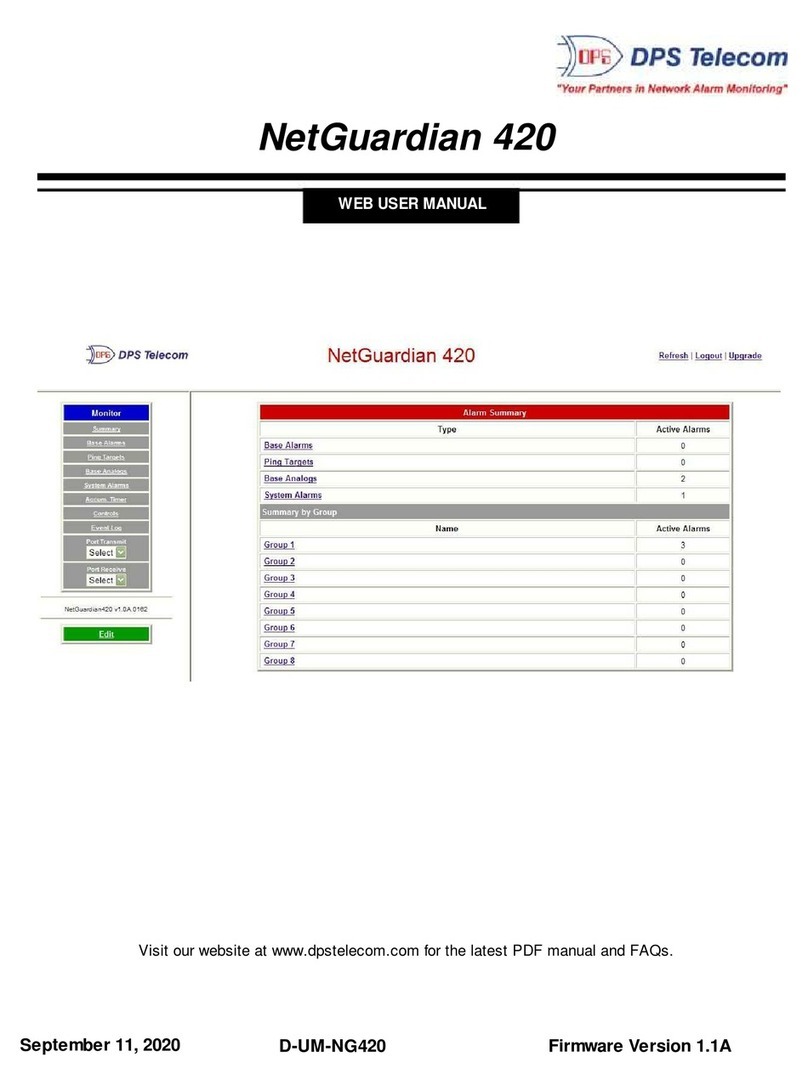
DPS Telecom
DPS Telecom NetGuardian 420 Web user manual
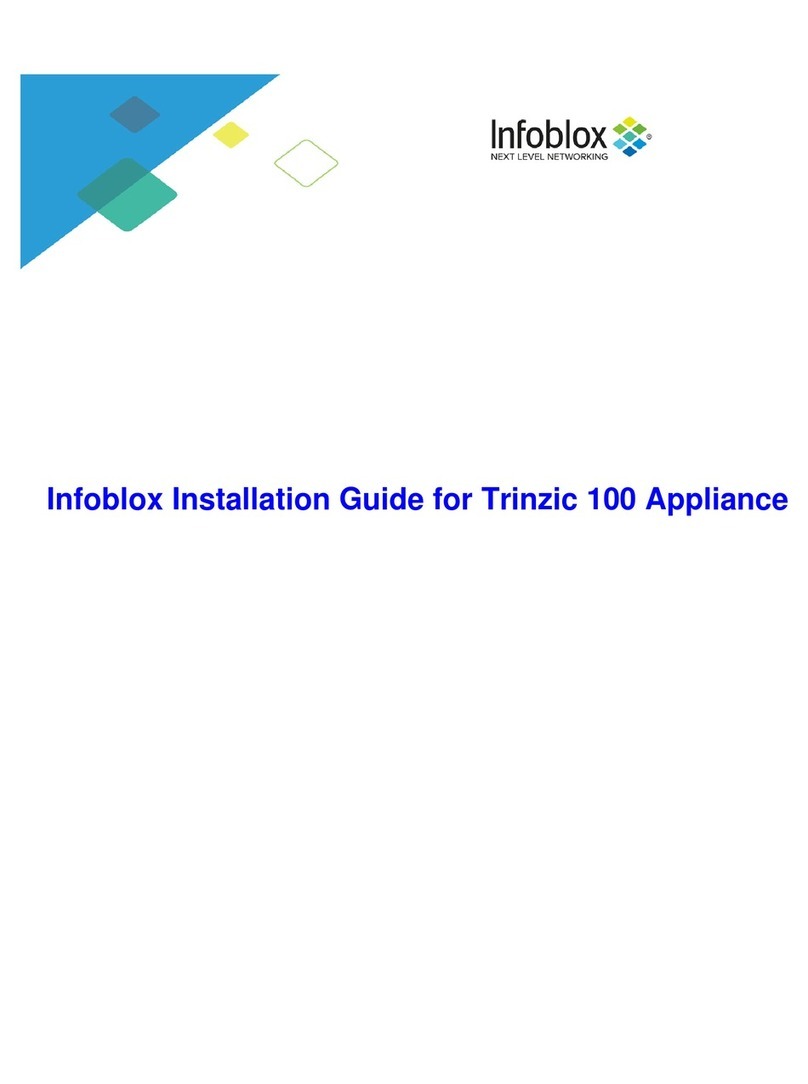
Infoblox
Infoblox Trinzic 100 installation guide
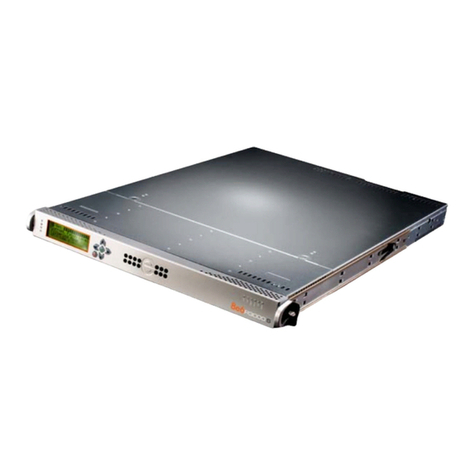
8e6 Technologies
8e6 Technologies Enterprise Filter Authentication R3000 quick start guide
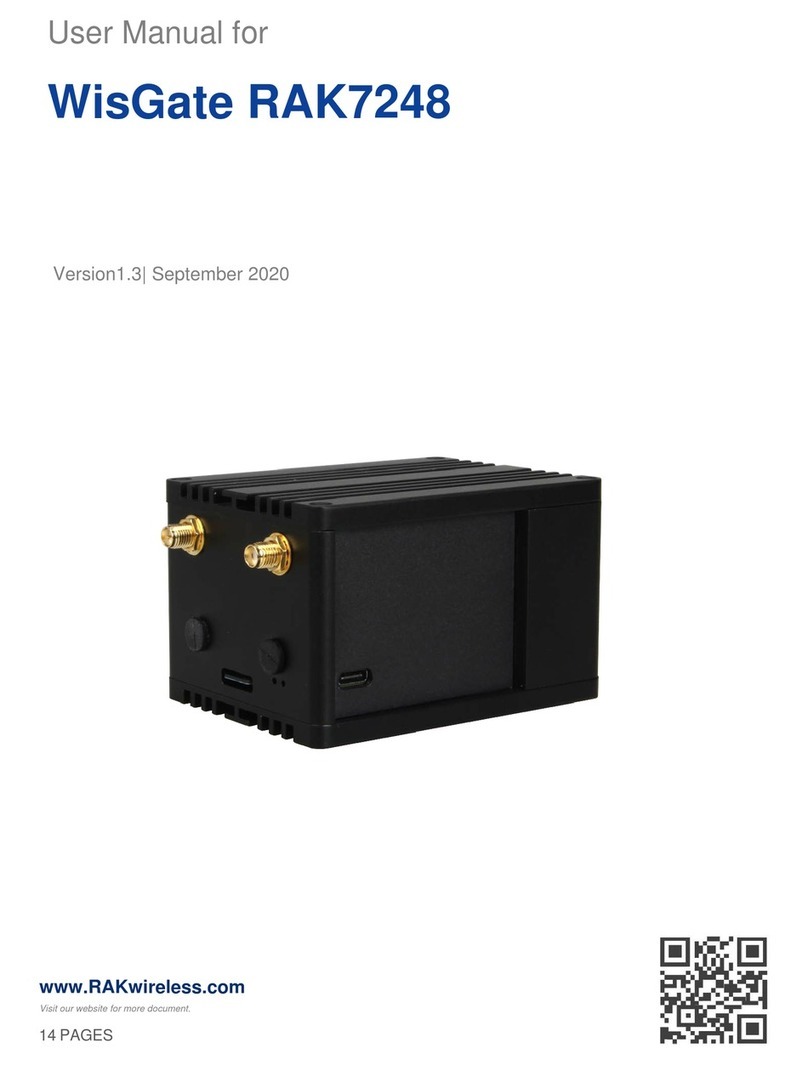
RAKwireless
RAKwireless WisGate RAK7248 user manual

Infinite
Infinite AERINOS ADS-270 user guide

Acer
Acer Altos S200F installation guide
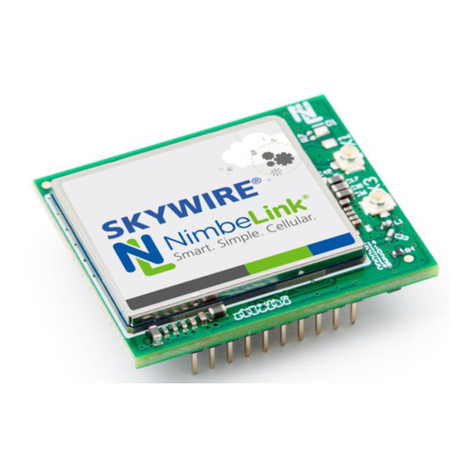
NimbeLink
NimbeLink Skywire LTE CAT M1 Installation
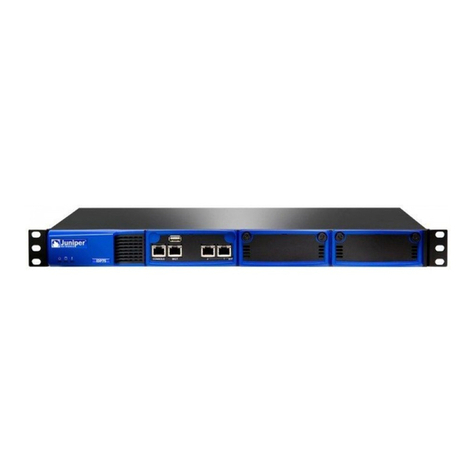
Juniper
Juniper IDP 800 installation guide

D-Link
D-Link DNS-323 - Network Storage Enclosure NAS... Quick install guide

Alcatel-Lucent
Alcatel-Lucent 5580 brochure

TP-Link
TP-Link TL-WA860RE Quick installation guide

Shoreline IoT
Shoreline IoT iCast1 user manual

